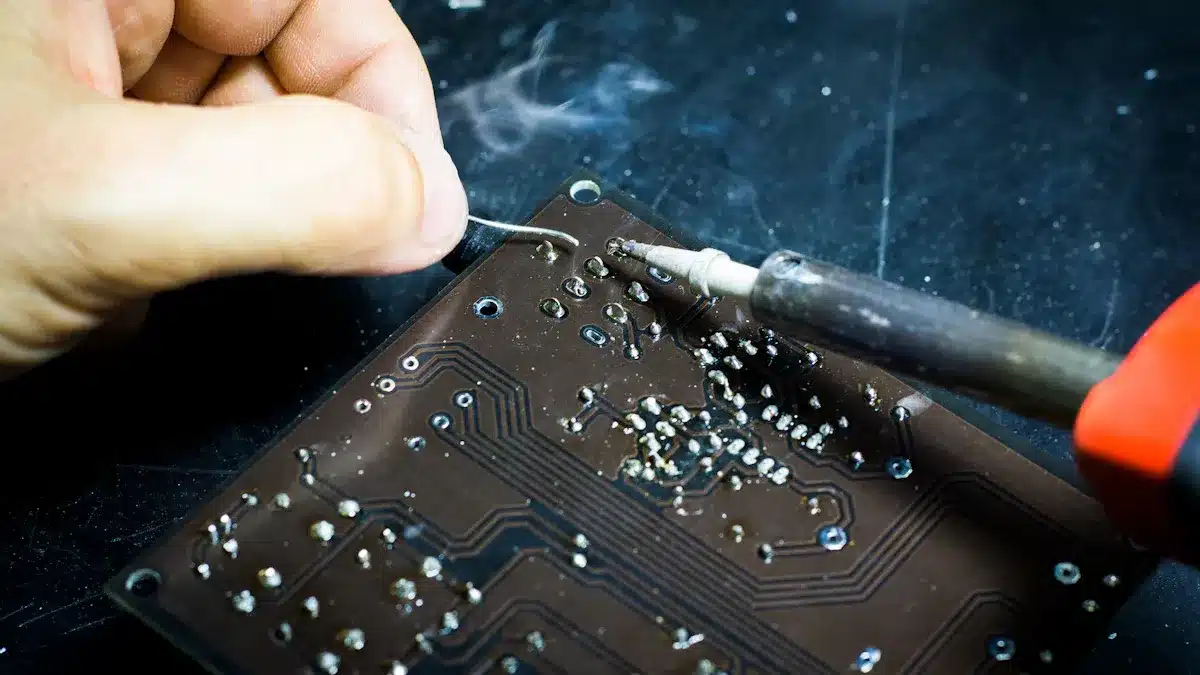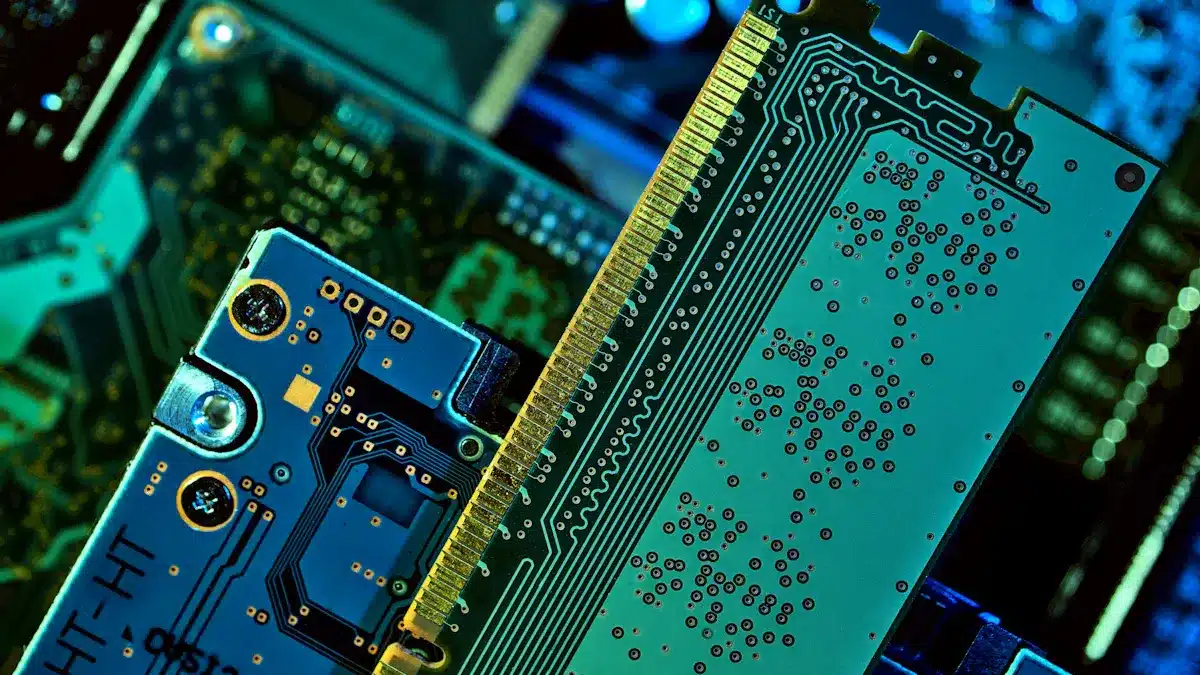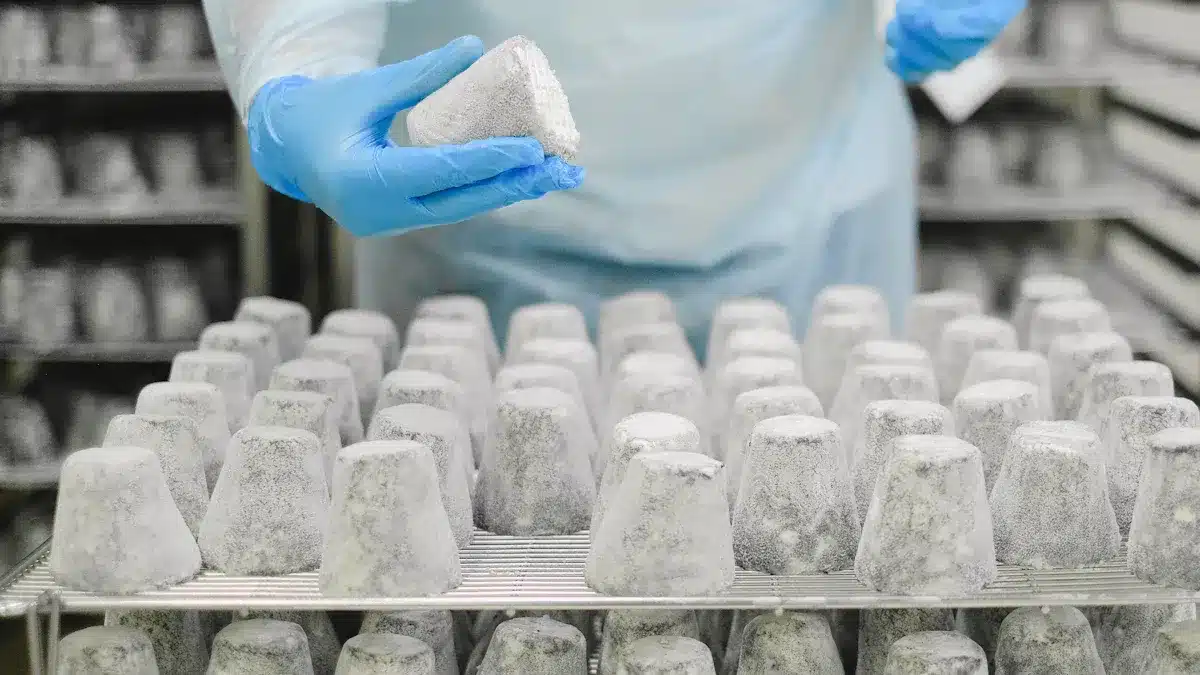
Choosing the right PCB assembly manufacturer is very important for your project. This choice affects product quality, cost, and how fast you get it. For instance, a medium-sized electronics company used better methods. They saw a 30-35% drop in average lead time. They did this by focusing on design and working with suppliers early. By picking a good partner, you can improve your printed circuit board assembly. This helps you get high-quality products on time.
Key Takeaways
First, figure out what your project needs. Think about how complex the design is before picking a PCB assembly manufacturer. This helps you find the best match for your needs.
Next, look up manufacturers online. Use directories and check their quality certifications like ISO 9001 and IPC-A-610. This ensures they meet high standards.
Then, check their testing methods. Look for things like Automated Optical Inspection and In-Circuit Testing. These methods help make products reliable and find problems early.
Also, find manufacturers that have good communication and support services. This way, you can get quick help and clear information during your project.
Finally, compare costs carefully. Balance the price with quality, turnaround time, and experience. This helps you get the best value for your money.
Identify Your Needs

When you start looking for a PCB assembly manufacturer, the first thing to do is figure out what you need. This means you should define your project requirements and know how complex your design is.
Project Requirements
Start by writing down your project needs. Think about these points:
Solder paste application: Use stencils and machines for even soldering.
Component placement: Decide between Surface Mount Technology (SMT) and Through-Hole Technology (THT) for accurate placement.
Reflow soldering: Control the temperature carefully to avoid damaging parts.
Inspection methods: Use Automated Optical Inspection (AOI) and X-ray to find problems.
Functional testing: Check electrical performance before shipping with In-Circuit Testing or Functional Circuit Testing.
Cleaning post-assembly: Get rid of flux and solder leftovers to improve reliability.
Design for Manufacturability (DFM): Make your layout better to lower mistakes and speed up production.
These needs will help you pick a manufacturer that fits your specific requirements.
Design Complexity
Next, think about how complex your PCB design is. Different designs need different manufacturing methods. Here’s a table that shows how design complexity affects your choice of manufacturing techniques:
Design Complexity Factor | Recommended Manufacturing Technique | Reasoning |
|---|---|---|
High component density | SMT or HDI | Supports automated, high-density assembly for complex layouts |
Power components | THT | Gives strength and easier testing for power parts |
Size constraints | HDI | Allows miniaturization and high routing density in tight spaces |
Mixed requirements | Combination of THT, SMT, and HDI | Hybrid method balances technical needs and cost |
Knowing these factors helps you choose a manufacturer with the right skills for your project. Working with manufacturers early can also improve production and make sure your design meets all standards.
Research PCB Assembly Companies
Finding the right PCB assembly company takes careful research. You can use different online tools and ask for suggestions to find possible manufacturers.
Online Resources
Begin your search by looking at online directories. These sites give useful details about PCB assembly companies. One of the best resources is the PCB Directory. This directory has over 3,100 PCB companies. It includes 2,356 assembly companies and 989 turn-key PCB assembly companies. Here are some reasons why it is a great resource:
It has detailed search filters for capabilities, services, and PCB types.
You can access company profiles and ask for quotes.
It offers extra resources like whitepapers, articles, and newsletters.
It covers many PCB services, such as fabrication, assembly, and testing.
Using these tools can help you narrow down your choices. You can find a PCB assembly manufacturer that fits your specific needs.
Evaluate Quality and PCB Assembly Process

When you choose a PCB assembly manufacturer, check their quality and assembly methods. This check helps you find a manufacturer that meets your needs for reliability and performance.
Quality Standards
Quality certifications show that a manufacturer cares about keeping high standards. Look for manufacturers with these certifications:
IPC (IPC-A-610): This certification shows accepted practices for PCB assembly. Many Original Equipment Manufacturers (OEMs) and Electronics Manufacturing Services (EMS) use it.
ISO Certifications: ISO 9001 is about quality management. ISO 13485 is important for medical devices. These certifications ensure strict quality control and happy customers.
RoHS Compliance: This certification limits harmful substances in electronics. It helps protect the environment.
UL Listing: This certification covers safety rules, including fire and electrical shock risks. It is important for many industries.
ITAR: This certification protects sensitive military technology. It requires secure tracking and real component authenticity.
MIL-STD: These are U.S. military standards for performance and environmental needs. Many commercial manufacturers follow these standards for quality checks.
These certifications help ensure product quality, safety, and environmental care. They are especially important for fields like defense, aerospace, and medical devices.
Certification | Impact on PCB Assembly Reliability |
|---|---|
ISO 9001 | Sets up quality management systems that companies must use and improve. This keeps quality and reliability steady. |
IPC-A-610 | Gives clear acceptance rules for PCB assemblies, covering placement, soldering, cleaning, and checking. Following these rules lowers defects and keeps things uniform. |
Combined Effect | Together, these certifications lower defects and failures. They ensure consistency and precision, making products last longer. |
Testing Options
Testing options are very important in the PCB assembly process. They help find problems early, so you get high-quality PCBs. Here are some common testing methods:
Testing Method | Stage in Assembly | Advantages | Disadvantages | Suitable For / Notes |
|---|---|---|---|---|
End of PCB assembly | Finds solder shorts and component failures; covers a lot (85-98%) | High machine cost; not great for dense modern PCBs | Standard bed of nails for most PCBs; Flying probe for prototypes and dense PCBs | |
After reflow soldering in SMT | Very fast and accurate; replaces human checks | Only finds surface problems | Good for all PCB amounts | |
Boundary Scan (JTAG) | After whole PCB assembly | Tests JTAG-compatible ICs together; non-intrusive | Limited to JTAG-compatible parts | Helpful for integrated circuit chips |
Burn-in Testing | After PCB assembly | Finds early failures; simulates long-term use | Takes time; can be expensive | Important for military and medical PCBs |
Functional Testing | After assembly, before burn-in | Tests all end-product behaviors; final pass/fail | Needs complex test setups | Good for batched PCBs; simulates real product operation |
These testing methods help lower defect rates by finding common issues like solder bridges and component misalignment at different stages of the PCB assembly process. For example, AOI quickly finds surface problems, while Burn-in testing spots early failures. By using these quality testing services, you can greatly improve the reliability of your PCBs.
Assess Customer Support
When you pick a PCB assembly manufacturer, check their customer support. Good customer support can really change your experience. It makes sure you get help quickly and clear communication during the whole process.
Communication
Good communication is very important in any business. You want a manufacturer who answers your questions fast. Here are some things to think about:
Response Time: See how quickly they reply to emails or calls. A fast reply shows they care about your time.
Clarity: Make sure their messages are clear and easy to understand. You should know their processes and any technical details without getting confused.
Availability: Look for manufacturers who are available during your working hours. This can help you fix problems quickly.
Good communication builds trust and helps you feel good about your choice of manufacturer.
Support Services
Besides communication, think about the support services the manufacturer offers. Many clients like these services:
Design help for complex layouts, including high-speed digital and RF designs.
Quick-turn and rapid prototype solutions that speed up making products.
Design for Manufacturability (DFM) services to improve reliability and lower costs.
Global services like vendor-managed inventory (VMI) and engineering reviews.
Flexible assembly options, including turnkey and kitted services.
Free tools like DFM file checks and PCB design software.
Certifications that show high reliability and compliance.
Customer portals for managing orders and tracking shipments.
These support services help make manufacturing efficient and keep high quality in your PCB assembly projects. After-sales support is also very important. It improves customer satisfaction and encourages repeat business. Offering lifecycle services, like maintenance and recycling, can make your relationship with the manufacturer stronger. This support helps keep customers and ensures steady income.
By looking at both communication and support services, you can choose a PCB assembly manufacturer that fits your needs and expectations.
Compare Costs and Value
When you look at PCB assembly manufacturers, it’s important to compare costs and value. You want to make sure you get the best quality for your money. Knowing how pricing works and looking at overall value can help you make smart choices.
Pricing Structures
PCB assembly manufacturers usually have different pricing based on how many you order. Here’s a simple breakdown of how costs change:
Order Volume | Quantity Range | Lead Time | Tooling Costs | Production Process | Cost per Board |
|---|---|---|---|---|---|
Low-Volume Orders | 10-100 PCBs | 10-20 Days | Moderate | Automated | Moderate (higher than high volume) |
High-Volume Orders | 1000+ PCBs | 4+ Weeks | High | Automated | Low (significantly reduced due to economies of scale) |
For low-volume orders, unit costs can be 5-10 times higher than for high-volume orders. This happens because fixed costs are spread over fewer units, raising the price per board. On the other hand, high-volume production benefits from economies of scale, which lowers costs per unit.
Also, keep in mind that Surface Mount Technology (SMT) assembly is often cheaper for high-volume production because of automation. In contrast, Through-Hole Technology (THT) needs more manual work, making it better for low-volume or special assemblies but at a higher cost. If you need things done quickly, remember that rush orders can add 10%-30% to your costs because of overtime and faster shipping.
Value Assessment
While price matters, you should also think about the overall value of the services from PCB assembly manufacturers. Here are some important things to consider:
Quality Assurance: Spending on quality assurance cuts down defects and keeps product quality steady. This helps your reputation and reduces costly rework.
Turnaround Time: Quick turnaround time is key for getting your products out fast. Look for manufacturers that offer speedy options and can handle design changes.
Provider Experience: Experienced manufacturers can manage project challenges better. Their skills often lead to better results.
Industry Certifications: Certifications like ISO 9001 and IPC standards show that they follow quality control and industry rules.
Location and Logistics: Where the manufacturer is located can affect delivery speed and how well you communicate. Local manufacturers often provide faster service.
Customer Service: Good technical support and clear communication are very important. Great customer service can improve your overall experience.
Advanced Technology: Manufacturers that use modern tools, like automated optical inspection and functional testing, can ensure better quality and reliability.
While low prices are nice, you should find a balance of quality, speed, skills, and support. A cost-effective plan that doesn’t sacrifice quality will help you succeed in the long run.
Choosing the right PCB assembly manufacturer is very important for your project’s success. Pay attention to these key points:
Quality Assurance: Look for certifications like ISO 9001 and IPC-A-610. These show that they follow strict rules and tests for reliability.
Technology and Expertise: Advanced machines and skilled workers help improve designs and manage complex projects.
Turnaround Time: Check production times and how flexible they are for rush orders to meet your deadlines.
Price: Balance cost with quality. Look for discounts on large orders and smart solutions that keep high standards.
Communication and Support: Good communication and strong support improve your experience and build trust.
By carefully looking at these factors, you can make smart choices that lower the chance of project failure. Take the next steps in your selection process, and make sure you work with a PCB assembly company that fits your needs.
FAQ
What should I think about when picking a PCB assembly manufacturer?
You should think about quality, production skills, customer help, and prices. Check their experience with your project needs to make sure they can help you.
How can I check a manufacturer’s quality certifications?
You can look at their website or ask for proof. Look for certifications like ISO 9001 and IPC-A-610. These show they follow industry rules.
What is the difference between SMT and THT?
Surface Mount Technology (SMT) puts parts right on the PCB surface. Through-Hole Technology (THT) puts parts through holes. SMT is usually better for making a lot of items quickly.
How do I know the right order amount for my project?
Think about your project timeline and budget. Low-volume orders are good for prototypes or small batches. High-volume orders save money per unit because of economies of scale.
What are common testing methods used in PCB assembly?
Common testing methods are In-Circuit Testing (ICT), Automated Optical Inspection (AOI), and Functional Testing. Each method finds problems at different steps of the assembly process.
See Also
Choosing The Ideal PCBA Manufacturer To Meet Business Goals
Locating Top PCBA Manufacturers Within Your Budget Limits
Selecting The Right PCB Fabrication Partner For Your Requirements
Effective Strategies For Picking The Best PCB Assembly Provider
Guidelines To Find The Best PCB Prototype Manufacturer Quickly